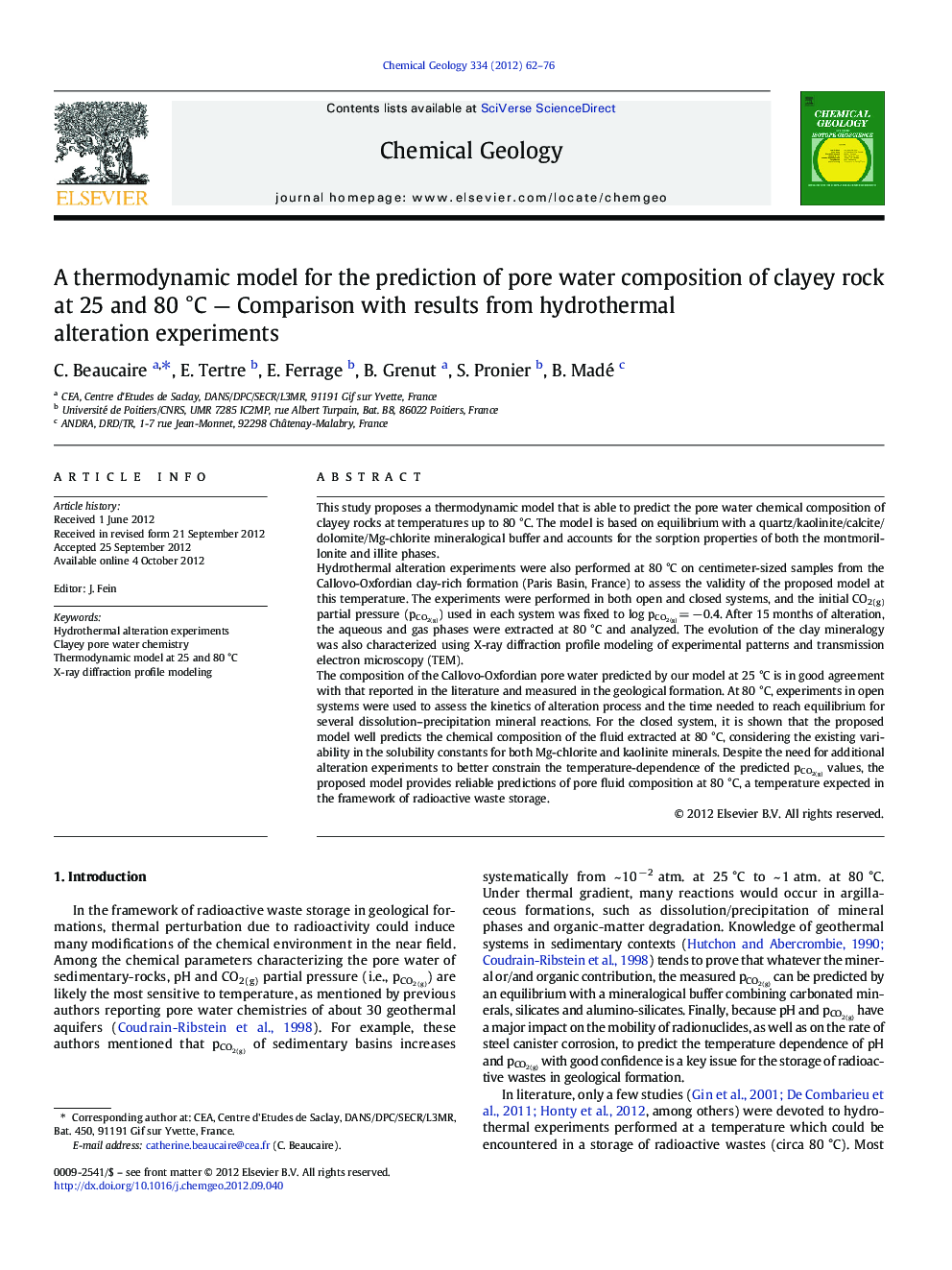| Article ID | Journal | Published Year | Pages | File Type |
|---|---|---|---|---|
| 4699171 | Chemical Geology | 2012 | 15 Pages |
This study proposes a thermodynamic model that is able to predict the pore water chemical composition of clayey rocks at temperatures up to 80 °C. The model is based on equilibrium with a quartz/kaolinite/calcite/dolomite/Mg-chlorite mineralogical buffer and accounts for the sorption properties of both the montmorillonite and illite phases.Hydrothermal alteration experiments were also performed at 80 °C on centimeter-sized samples from the Callovo-Oxfordian clay-rich formation (Paris Basin, France) to assess the validity of the proposed model at this temperature. The experiments were performed in both open and closed systems, and the initial CO2(g) partial pressure (pCO2(g)) used in each system was fixed to log pCO2(g) = − 0.4. After 15 months of alteration, the aqueous and gas phases were extracted at 80 °C and analyzed. The evolution of the clay mineralogy was also characterized using X-ray diffraction profile modeling of experimental patterns and transmission electron microscopy (TEM).The composition of the Callovo-Oxfordian pore water predicted by our model at 25 °C is in good agreement with that reported in the literature and measured in the geological formation. At 80 °C, experiments in open systems were used to assess the kinetics of alteration process and the time needed to reach equilibrium for several dissolution–precipitation mineral reactions. For the closed system, it is shown that the proposed model well predicts the chemical composition of the fluid extracted at 80 °C, considering the existing variability in the solubility constants for both Mg-chlorite and kaolinite minerals. Despite the need for additional alteration experiments to better constrain the temperature-dependence of the predicted pCO2(g) values, the proposed model provides reliable predictions of pore fluid composition at 80 °C, a temperature expected in the framework of radioactive waste storage.
► We propose a pore water model at 25 and 80 °C for sedimentary basins. ► Model is based on a mineralogical buffer and ion-exchange reactions. ► Model at 25 °C is validated by published experimental values measured previously in situ. ► Hydrothermal alteration experiments performed with argillite from the COx validate the model at 80 °C.
